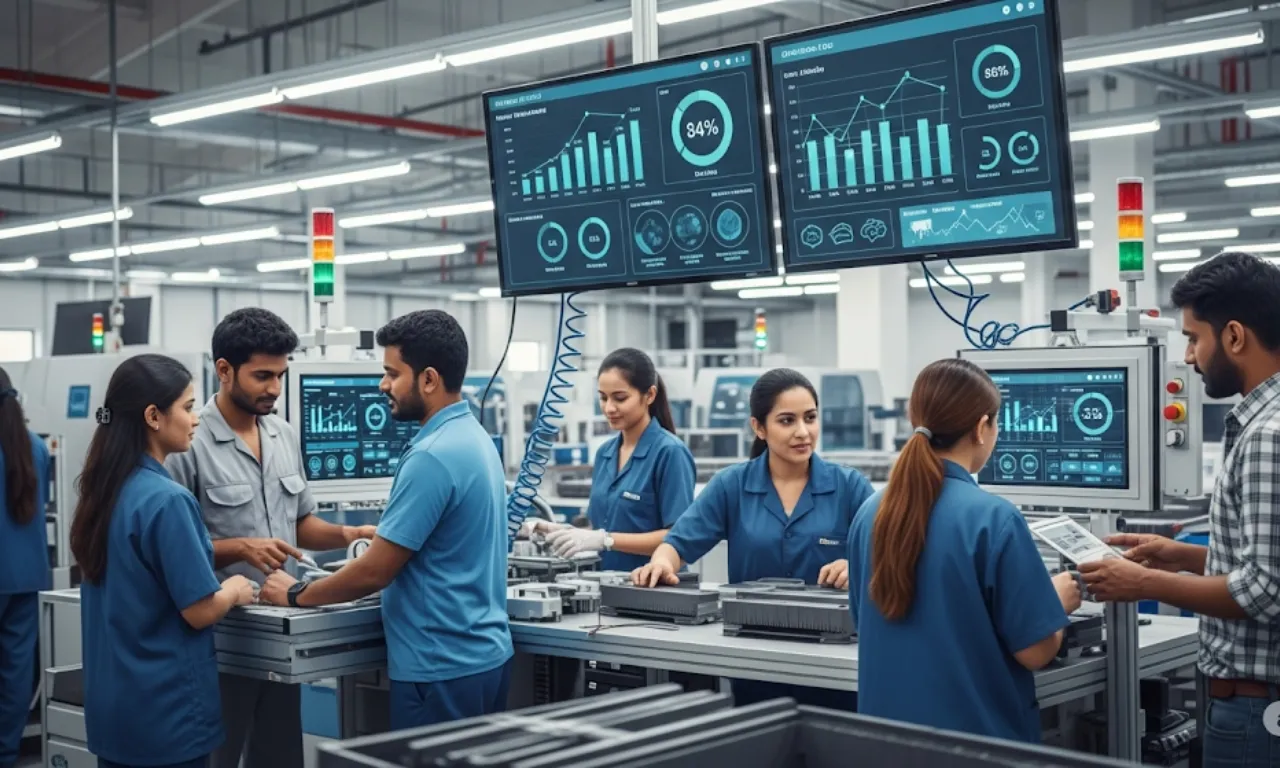- PADMA scheme supports the growth of MSMEs in India’s aspirational districts through block-level clusters and shared infrastructure.
- It helps MSMEs with access to technology, skill development, financial resources, and encourages women’s leadership.
- Collaboration between government, financial institutions, and educational bodies drives PADMA, despite challenges like funding delays and gaps in digital literacy.
The Promoting and Accelerating Development of MSMEs in Aspirational Districts (PADMA) scheme has become an important factor in transforming MSMEs and local industrial growth across India in 2025. This mission focuses on lifting micro, small, and medium enterprises by providing modern technology, financial help, and supporting communities, especially in less developed areas. If you want to know how PADMA is changing India’s economic landscape and helping create balanced regional growth, this article will walk you through its features, benefits, and what to expect next.
Key Features of the PADMA Scheme Changing MSMEs
PADMA sets itself apart by building block-level industrial clusters designed around the local market potential and resources. These very local clusters focus on the specific needs of aspirational districts, tackling regional imbalances in economic growth.
- Better Technology Access: The scheme brings in digital tools, automated processes, and e-marketplaces, helping MSMEs reach wider markets and boost productivity.
- More Skill Development: Vocational centers in each cluster train local people, especially women and youth, improving their job prospects and skills in new technologies.
- Common Facility Centers (CFCs): Shared infrastructure like logistics hubs, testing labs, tool rooms, and cold storage lets MSMEs work more efficiently and cut costs.
- Financial Help: PADMA offers various financial options including subsidized grants, venture funding, and credit guarantees to overcome usual barriers like lack of collateral or credit history.
How PADMA Supports Local MSMEs and Communities
Starting PADMA in 2025 tackles key problems faced by MSMEs, especially in rural and less developed areas, while boosting women’s participation and community growth.
Improved Technology and Skill Development in PADMA Clusters
Clusters under PADMA use many digital tools—like packaging automation, barcode scanning, UPI-enabled payments, inventory software, and online B2B platforms. These help MSMEs update their operations. Vocational training programs teach locals important digital and technical skills, greatly improving employment chances.
Financial Support under PADMA
Knowing MSMEs’ financial difficulties, PADMA uses a mixed capital model offering subsidized grants, venture capital, and government-backed credit options. These make financing easier for businesses without formal documents or collateral, promoting entrepreneurship and steady business growth.
Women’s Leadership and Inclusion in PADMA
Women-led clusters get special attention, aiming to boost gender-inclusive industrial development. Support includes dedicated working capital, special training, and product development help, encouraging women entrepreneurs to lead and grow their businesses within these industrial communities.
Teamwork and Stakeholder Participation in PADMA’s Success
PADMA’s success depends on strong partnerships between central and state governments, financial institutions, industries, and educational bodies. This joint effort makes sure infrastructure development, funding, skill training, and market connections reach each cluster well.
Also Read – India UK FTA – Comprehensive Economic and Trade Agreement Between India and UK Enhances Bilateral Trade
Challenges and Future Plans for PADMA
Although the scheme is doing well, some problems remain:
- Delays in venture capital being given to MSMEs.
- Low digital literacy among rural entrepreneurs, limiting technology use.
- Slow progress in infrastructure and land availability at the block level.
- Need for ongoing support and monitoring to maintain cluster growth.
Fixing these issues requires closer work with startups, increased Public-Private Partnerships (PPPs), and setting up dedicated state-level management units to make execution smoother.
| Feature | Details |
|---|---|
| Registered MSMEs (July 2024) | 4.77 crore via Udyam Portal |
| Key Locations | Bhagalpur, Barabanki, Bastar, Palghar |
| Official Haryana MSME Info | msme.haryana.gov.in/padma-schemes/ |
| Implemented By | Central & State Governments, Financial Institutions, Industries, Educational Bodies |
PADMA is more than a funding scheme – it acts as a model for a technology-driven and financially inclusive MSME system, especially focusing on aspirational districts where growth had been slow. It encourages independent and sustainable industrial bases in rural and urban areas, helping India move closer to becoming a strong global economy through the energy of its MSMEs.

